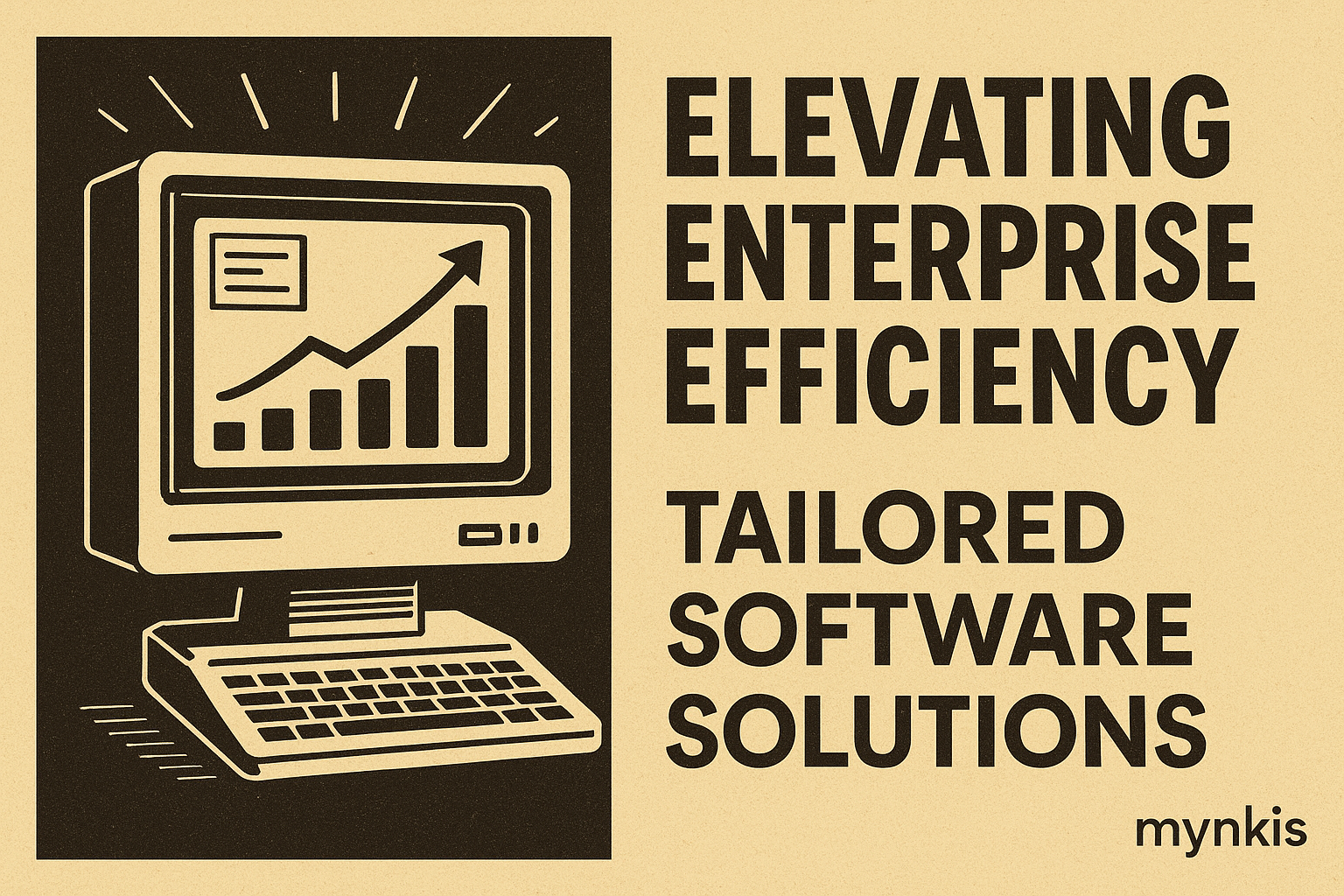Schedule a Demo
In my work with numerous businesses across various sectors, I've noticed a pivotal shift. Enterprises are now recognizing the invaluable contribution that custom software development can make to their operations. At its core, custom software development offers a bespoke solution tailored precisely to the unique needs of a business, something off-the-shelf options can't match.
Whether it's streamlining processes or enabling real-time data analysis, a well-designed, enterprise-level software application can drastically improve efficiency. It's like having a tool crafted just for you, fitting your grip perfectly, and amplifying your capability to perform at your best.
Business owners and c-level executives often seek to maximize their digital presence and effectively engage their audience. A crucial aspect of this is integrating a booking system into their websites. Not just any system, but one designed to enhance user experience and drive high conversion rates. Custom software can be meticulously optimized for this, ensuring users find booking straightforward and appealing.
The challenge is not just to attract visitors to your website but to convince them to take action. Using a software solution that's crafted with a focus on user psychology can make all the difference. It guides potential clients through the booking process intuitively, improving their overall experience and your business's bottom line.
One misconception some hold is that functionality must come at the expense of design. Yet, I've found that integrating aesthetics into enterprise software amplifies its effectiveness. A visually pleasing and user-friendly interface can significantly increase engagement, driving those conversion rates even higher.
With enterprise web solutions, the goal is to marry form with function. Design can influence users' decisions and feelings towards a product, which in turn can affect how often and how readily they engage with your system. This, in theory, leads to a smoother operational flow and, naturally, a stronger commitment to your brand.
Organic search remains one of the most potent pathways for driving traffic to your site. But optimizing for this requires understanding both your industry and how you can best position your services for search engines. This is where customized software for SEO comes into play.
Personal experience teaches that one-size-fits-all approaches seldom achieve the same depth of results as a tailored solution. A custom-built software can adapt to evolving search engine algorithms, enabling your enterprise to consistently appear at the forefront of relevant searches. Something that often proves crucial for small businesses and large corporations alike.
Embracing custom software development for your enterprise involves several strategic steps:
I've seen some companies soar and others falter solely based on their approach to this step. Taking the time to meticulously plan can make all the difference in the effectiveness of your final product.
One major concern of investing in custom software for enterprise applications is the cost. Yes, the initial outlay can be significant, but consider the potential returns. A well-designed software solution can lead to increased efficiencies, higher conversion rates from booking-enabled websites, and substantial competitive advantages.
My clients often experience a pronounced boost in ROI as they implement and refine their software. It's about identifying and measuring these gains, understanding where your investment has gone and how it's been amplified over time. Delving into these numbers can provide you with a clearer picture of the future landscape for your business.
Businesses aren't static entities; they grow and evolve. Thus, the software used should not only meet current demands but also cater to future expansion. Scalability within enterprise web solutions ensures your software can adapt as your business scales up operations or diversifies its services.
Scalability is not just about handling more users or larger data sets; it’s about the capacity of your software to change. Are new modules required for your expanding services? Can existing ones be adjusted? Based on my experience working alongside business owners and CEOs, being prepared to scale from the get-go is fundamental.
Incorporating robust data analysis tools within your enterprise application offers invaluable insights. Decisions grounded in real data rather than intuition can lead to more strategic and effective business practices. An advanced dashboard or reporting system can reveal trends, customer behaviors, and operational efficiency.
I've seen firsthand how businesses that utilize this kind of intelligence gain a clear competitive edge. It's powerful to know your clients so well that you can anticipate their needs, based on the data, ensuring your services are one step ahead at all times.
In the realm of enterprise applications, balancing the excitement of innovation with the necessity of stability is key. Companies are often caught between wanting to implement cutting-edge technology and ensuring that their day-to-day operations remain uninterrupted. Custom software enables this balance, allowing for incremental updates rather than disruptive overhauls.
As someone deeply entrenched in the tech sphere, I recognize the importance of both pushing forward and keeping things secure. Enterprise software should be the medium through which innovation is introduced slowly, carefully weaving new tools into the fabric of existing operations. It's all about finding that sweet spot where innovation enhances rather than disrupts.
The journey of creating and refining enterprise software is not a linear one. User feedback is a golden insight that guides developers toward better versions of their product. Gathering feedback from real users who interact with your booking system or your website can direct developers to where improvements are most needed.
By incorporating such a feedback loop, companies can stay ahead of any dissatisfaction, ensuring high user conversion rates remain, and continuous enhancements reflect true customer needs. This iterative process is the very backbone of any thriving software within the enterprise web solutions space.
